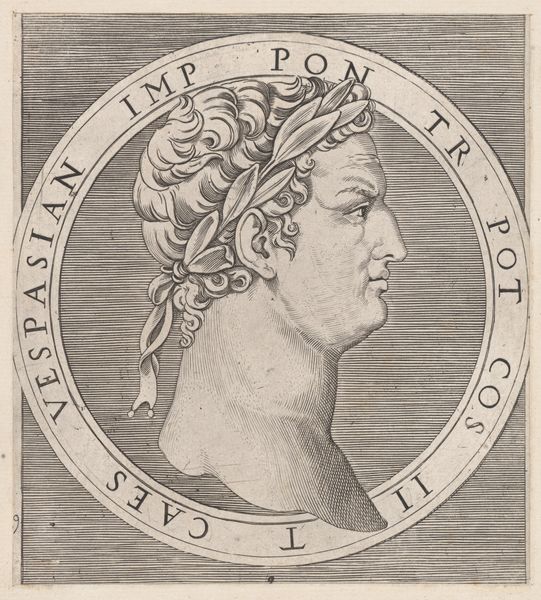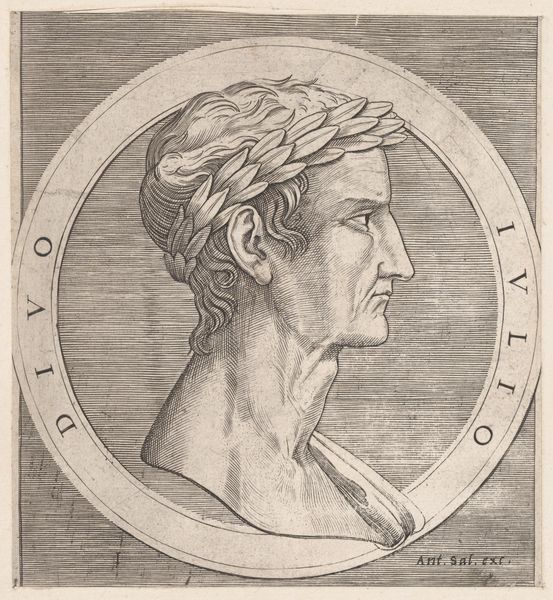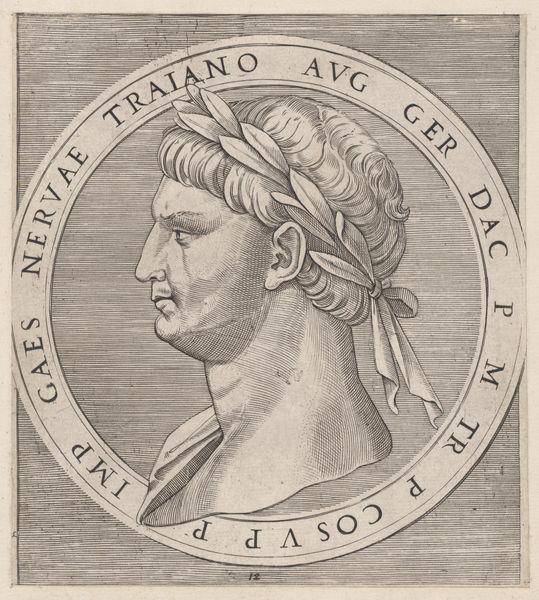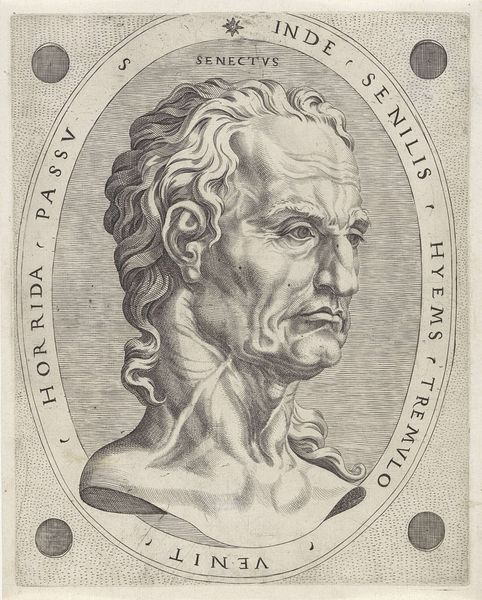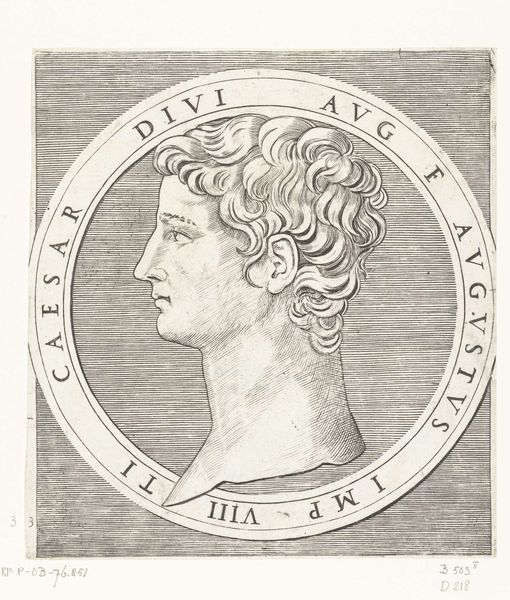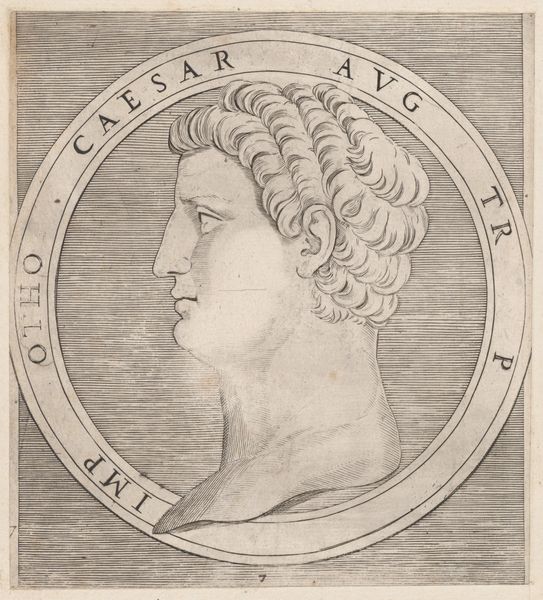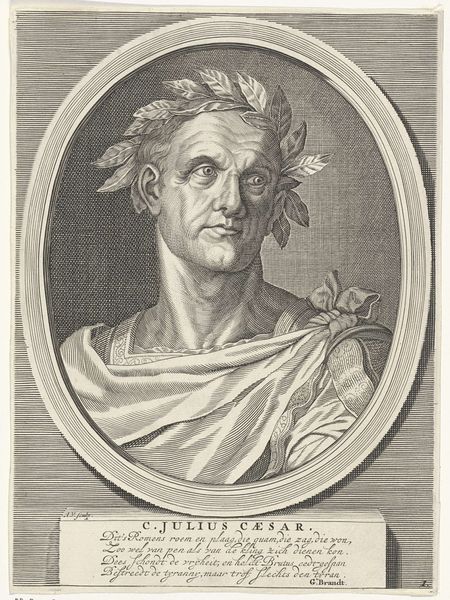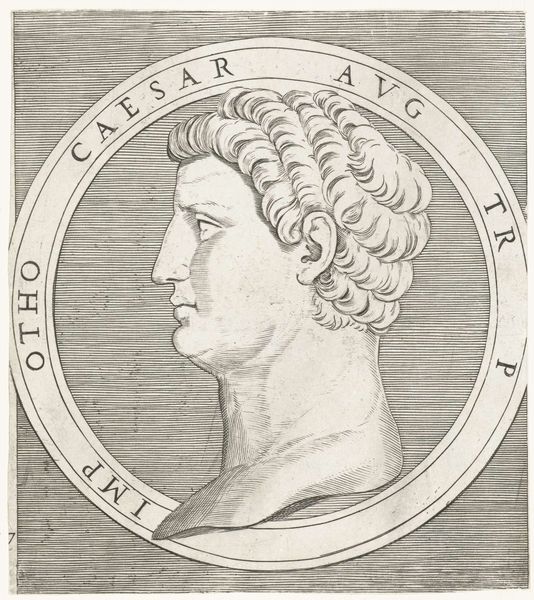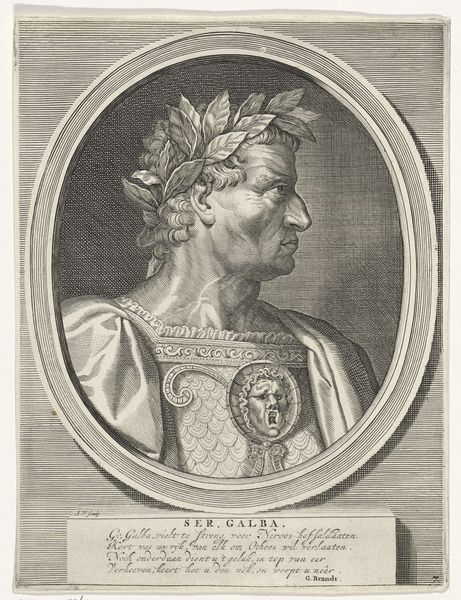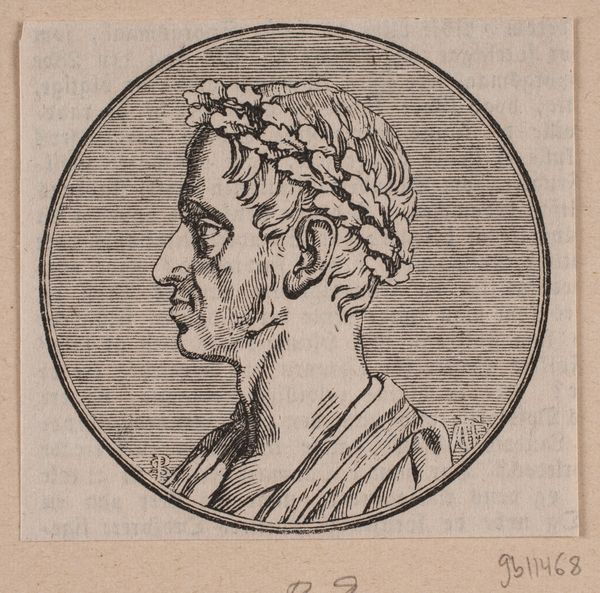
Speculum Romanae Magnificentiae: Galba, from The Twelve Caesars 1495 - 1539
0:00
0:00
drawing, print, engraving
#
portrait
#
drawing
# print
#
caricature
#
portrait drawing
#
history-painting
#
italian-renaissance
#
engraving
Dimensions: mount: 13 1/4 x 11 in. (33.6 x 28 cm) sheet: 6 11/16 x 5 7/8 in. (17 x 15 cm)
Copyright: Public Domain
Editor: This engraving by Marcantonio Raimondi, dating from somewhere between 1495 and 1539, depicts Galba from "The Twelve Caesars." The level of detail is incredible for a print. I am really curious about it. How should we look at this today? Curator: Think about the labor that went into this print. Engraving is an incredibly time-consuming process. Raimondi isn’t just making a pretty picture. He's reproducing an image of power, Caesar, for wider distribution, manipulating materials, like the copperplate and ink, to serve a cultural narrative. Do you see how the medium affects the message? Editor: I suppose so. It's like mass production of propaganda, even in the 16th century. He took care to present him in profile, and it's all about asserting imperial status. Curator: Precisely! Consider the paper it's printed on – where did it come from? Who had access to it? Even the act of collecting and displaying prints like this speaks to a specific social and economic position. Think about the act of reproduction in multiples. How does this shift its meaning? Editor: So, you're saying it's not just about *who* Galba was, but *how* this image was created, disseminated, and consumed? That is very cool to keep in mind when discussing prints! Curator: Exactly! And how that act of consumption further reinforces the power structures. By focusing on the material conditions of production, we start to unpack the ideologies embedded within the image itself. Editor: I never thought about prints in this way! Now, when I see this, I won’t only consider Galba’s power as Caesar, but about the materiality of image-making and its place in culture. Curator: Exactly, considering those processes opens up a whole new world to investigate.
Comments
No comments
Be the first to comment and join the conversation on the ultimate creative platform.

